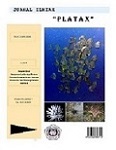Diversity of Mushroom Coral (Fungidae) in Siladen Waters, North Minahasa
DOI:
https://doi.org/10.35800/jip.1.4.2013.3677Abstract
Mushroom coral are well known in the waters of southeast asia because in this region has encountered in high abundance in shallow water and reef slope. Research on the diversity of mushroom coral (Fungiidae) conducted in July in the sea of Siladen island with four observation stations, they are Siladen I, Siladen II, Siladen III and Siladen IV. The research aims to determine mushroom coral species and diversity in the sea of Siladen Island, North Minahasa. This research use belt transect method and be extends parallel of the shoreline with 50x3m length of transects. The results showed that 13 species from seven genera were recorded. They are Fungia, Heliofungia, Ctenactis, Herpolitha, Polyphyllia, Sandalolitha and Podabacia. The number of coral species are found in the sea of Siladen island reached 32% of all coral species in the tropical Indo-Pacific region. Diversity Index of mushroom coral in the Siladen waters ranged from 0.837–0.97. Mushroom coral density each station ranged from 0,11-0,22 ind/m2.
Keywords : Diversity, mushroom coral, Siladen Island, North Minahasa
Downloads
How to Cite
Issue
Section
License
COPYRIGHT
Authors who publish with this journal agree to the following terms:
Authors hold their copyright and grant this journal the privilege of first publication, with the work simultaneously licensed under a Creative Commons Attribution License that permits others to impart the work with an acknowledgment of the work's origin and initial publication by this journal.
Authors can enter into separate or additional contractual arrangements for the non-exclusive distribution of the journal's published version of the work (for example, post it to an institutional repository or publish it in a book), with an acknowledgment of its underlying publication in this journal.
Authors are permitted and encouraged to post their work online (for example, in institutional repositories or on their website) as it can lead to productive exchanges, as well as earlier and greater citation of the published work (See The Effect of Open Access).




















